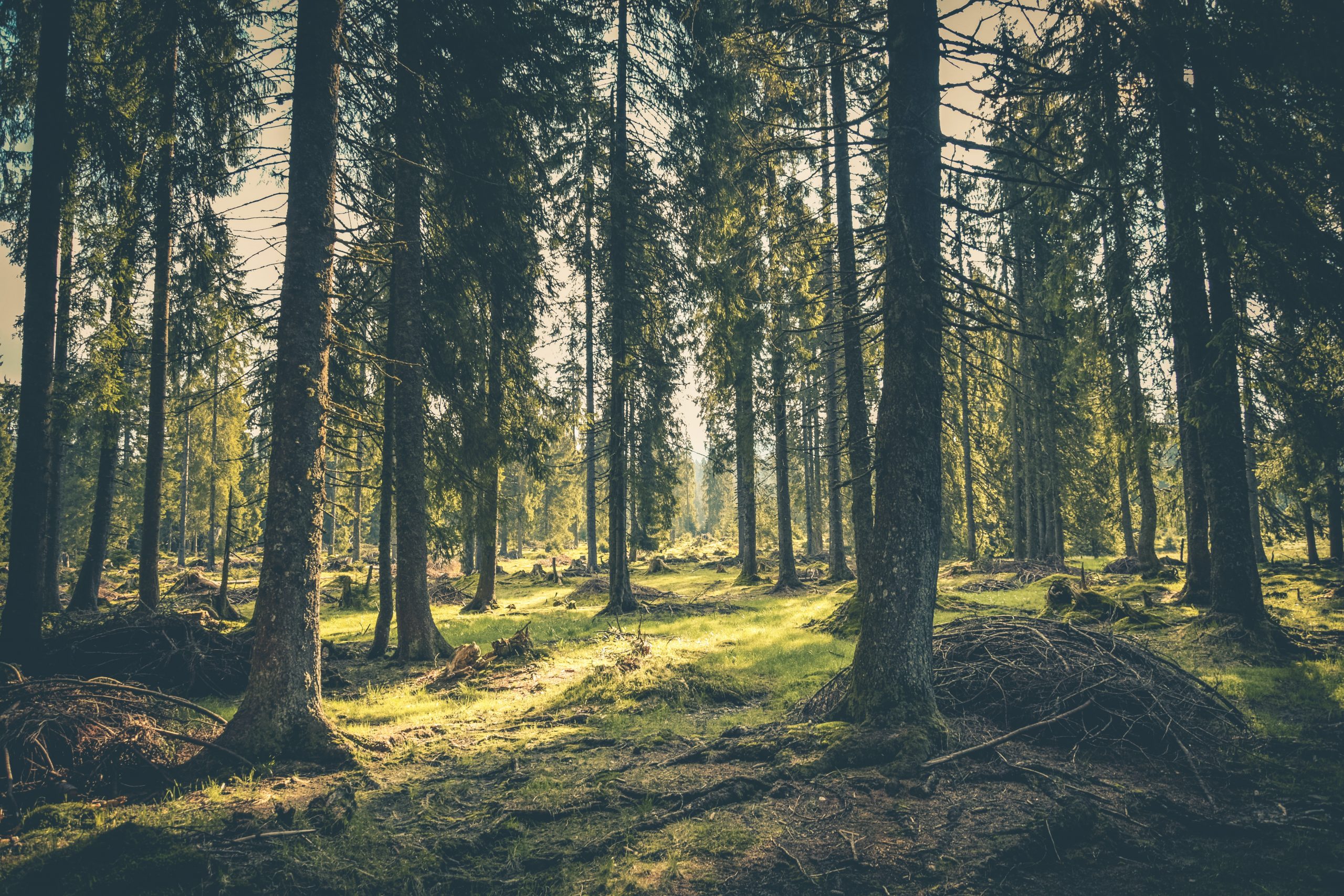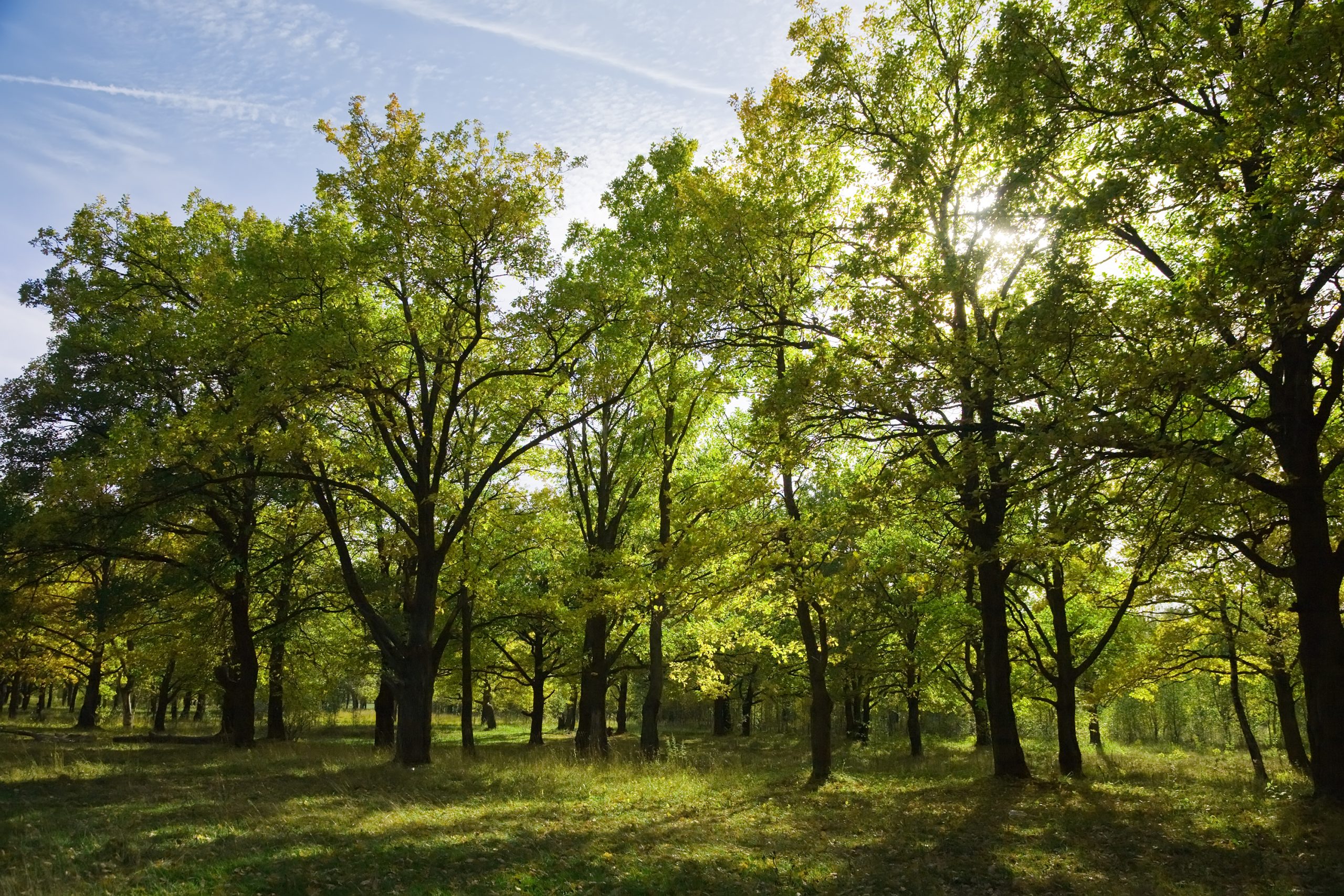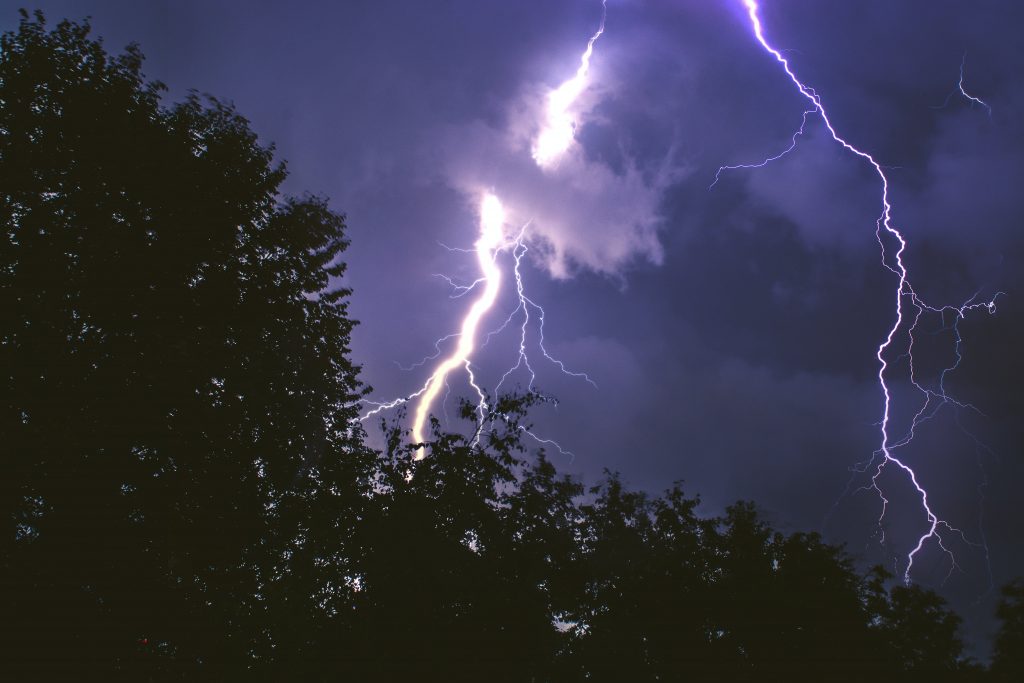UNDERSTANDING THE DIFFERENT TYPES OF TREE DISEASES CAUSED BY FUNGI AND BACTERIA TOGETHER
UNDERSTANDING THE DIFFERENT TYPES OF TREE DISEASES CAUSED BY FUNGI AND BACTERIA TOGETHER
Most plant diseases – around 85% – are caused by fungal or fungal-like organisms. However, other serious diseases of food and feed crops are caused by viral and bacterial organisms. Certain nematodes also cause plant disease. Some plant diseases are classified as “abiotic,” or diseases that are non-infectious and include damage from air pollution, nutritional deficiencies or toxicities, and grow under less than optimal conditions. For now, we’ll look at diseases caused by the three main pathogenic microbes: fungus, bacteria and virus. If plant disease is suspected, careful attention to plant appearance can give a good clue regarding the type of pathogen involved.
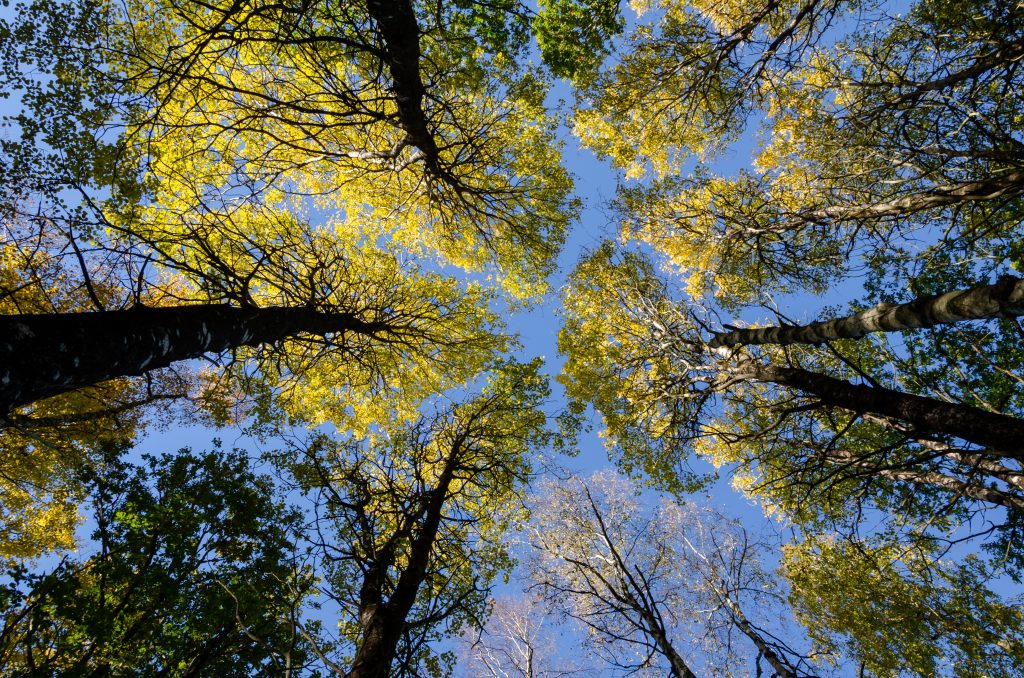
A sign of plant disease is physical evidence of the pathogen. For example, fungal fruiting bodies are a sign of disease. When you look at powdery mildew on a lilac leaf, you’re actually looking at the parasitic fungal disease organism itself (Microsphaera alni). Bacterial canker of stone fruits causes gummosis, a bacterial exudate emerging from the cankers. The thick, liquid exudate is primarily composed of bacteria and is a sign of the disease, although the canker itself is composed of plant tissue and is a symptom.
A symptom of plant disease is a visible effect of disease on the plant. Symptoms may include a detectable change in color, shape or function of the plant as it responds to the pathogen. Leaf wilting is a typical symptom of verticilium wilt, caused by the fungal plant pathogens Verticillium albo-atrum and V. dahliae. Common bacterial blight symptoms include brown, necrotic lesions surrounded by a bright yellow halo at the leaf margin or interior of the leaf on bean plants. You are not actually seeing the disease pathogen, but rather a symptom that is being caused by the pathogen.
Here are a few examples of common signs and symptoms of fungal, bacterial and viral plant diseases:
Fungal disease signs:
- Leaf rust (common leaf rust in corn)
- Stem rust (wheat stem rust)
- Sclerotinia (white mold)
- Powdery mildew
Fungal disease symptoms:
- Birds-eye spot on berries (anthracnose)
- Damping off of seedlings (phytophthora)
- Leaf spot (septoria brown spot)
- Chlorosis (yellowing of leaves)
Bacterial disease signs (difficult to observe, but can include):
- Bacterial ooze
- Water-soaked lesions
- Bacterial streaming in water from a cut stem
Bacterial disease symptoms:
- Leaf spot with yellow halo
- Fruit spot
- Canker
- Crown gall
- Sheperd’s crook stem ends on woody plants
Causes & Classifications Of Tree Diseases
A tree disease suggests any deviation or malfunctioning due to a persistent agent. There exist about a hundred diseases for each of thousands of plant species, with different triggers.
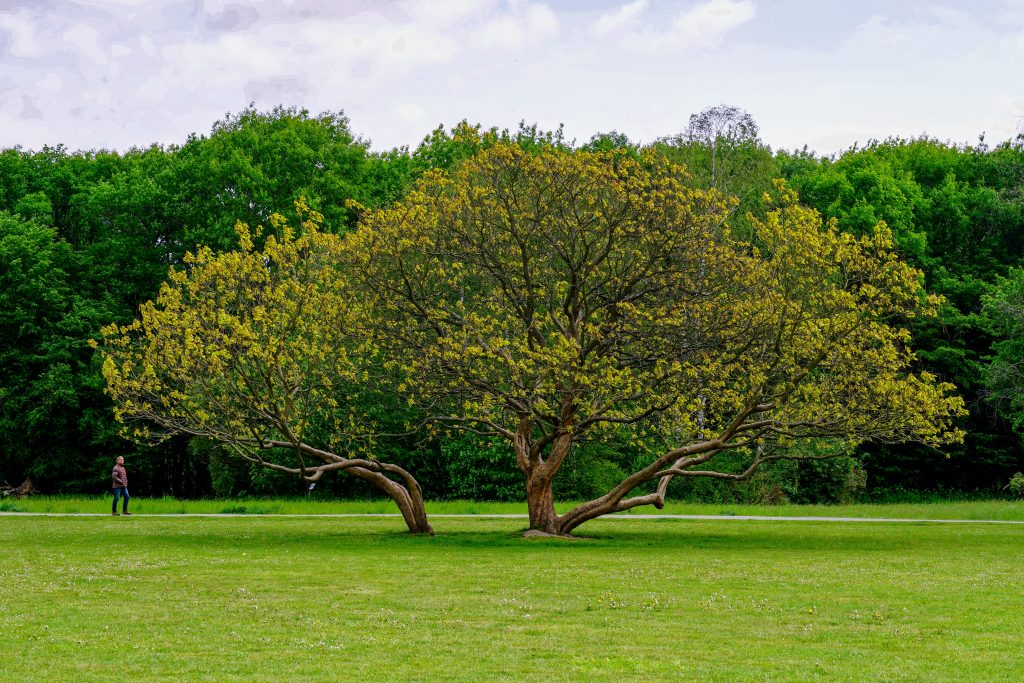
Causes
There are abiotic and biotic inducers (non-living and living). Biotic diseases are further grouped according to the pathogen type (bacteria, fungi, viruses, phytoplasmas, nematodes, etc.).
Here it should be noted that in most cases, pathogens are parasites. However, not each pathogen is a parasite, and not each parasite is a pathogen. Thus, some parasites cause no harm to plants and, correspondingly, don’t provoke any diseases. On the contrary, parasites may be beneficial. Also, some earth-dwelling bacteria don’t parasite on plants but produce harmful toxins that trigger tree root diseases.
Classifications
The most common classifications base on the following parameters:
- Cause – depending on the trigger.
- Host tree – according to the suffering species (poplar, conifer, pine, maple, etc.).
- Tree part – specifying the affected area. There are leaf (foliage), stem (bark), and root infections.
- Tree age – considering the degree of maturity. There are nursery, sapling, and mature tree growth diseases.
Tree disease identification takes into account signs and symptoms. Signs are changes produced by pathogen tissues (e.g., white rust). Symptoms are how plants suffer from infections (e.g., defoliation, crown thinning, decay, wilt, etc.). Using change detection technology, foresters can understand when woods are stressed.
Tree Leaves Disease
As the name suggests, these affect foliage. The main culprits of foliar infections are fungi. However, signs and symptoms can be similar to chemical injury of insect infestations, which complicates tree leaf disease identification and the choice of corresponding management. The problem eradication strongly depends on the reasonability of treatment costs and is not always possible due to favorable weather conditions for fungi development. In this regard, the most typical method of foliar tree disease treatment is removing and destroying the leaves in the fall. It prevents pathogen overwintering and relapse in spring.
Tree leaf diseases affect both conifers and hardwoods and differ by the degree of severity. While some cause little harm, the rest are rather dangerous and can cause mortality.
Pine Needle Diseases
Conifer foliage infections are typical but rarely represent a serious threat. Thus, in most cases, they don’t require treatment unless merchantability is in question. This refers to ornamental and Christmas trees, and spraying is the common method to defeat the pathogen colonization. In large forests, it is rarely implemented though due to a lack of feasibility and necessity. Generally, there are three types of pine needle diseases: needle rusts, casts, and blights.
Needle Rusts
Needle rust covers the needles and refers to the least dangerous coniferous tree diseases.
Needle Casts
Needle cast fungi grow inside the needles forming long hysterothecia and typically cause defoliation (or casts, hence, the name derives). Depending on the pathogens, there distinguished lophodermium, elytroderma, rhabdocline casts, and many more. About forty pathogenic genera cause this tree disease in the US.
Needle Blights
Needle blight is also an infection inside the needle that causes its partial death. The most common types of tree diseases in this category include snow, brown felt, brown spot, and red band needle blights.
Sooty Mold
It is a soot-like substance on the leaves due to insects’ honeydew secretion. This condition is not a disease since fungi dwell in honeydew without penetrating the plant, yet the black sooty covering severely reduces Christmas tree merchantability. It is typical for the northeastern regions of the USA and affects different pine species.
Hardwood Leaf Diseases
Most infections of hardwood species are also caused by fungi, with no specific tree diseases treatment. Common management suggests removing and destroying contaminated leaves.
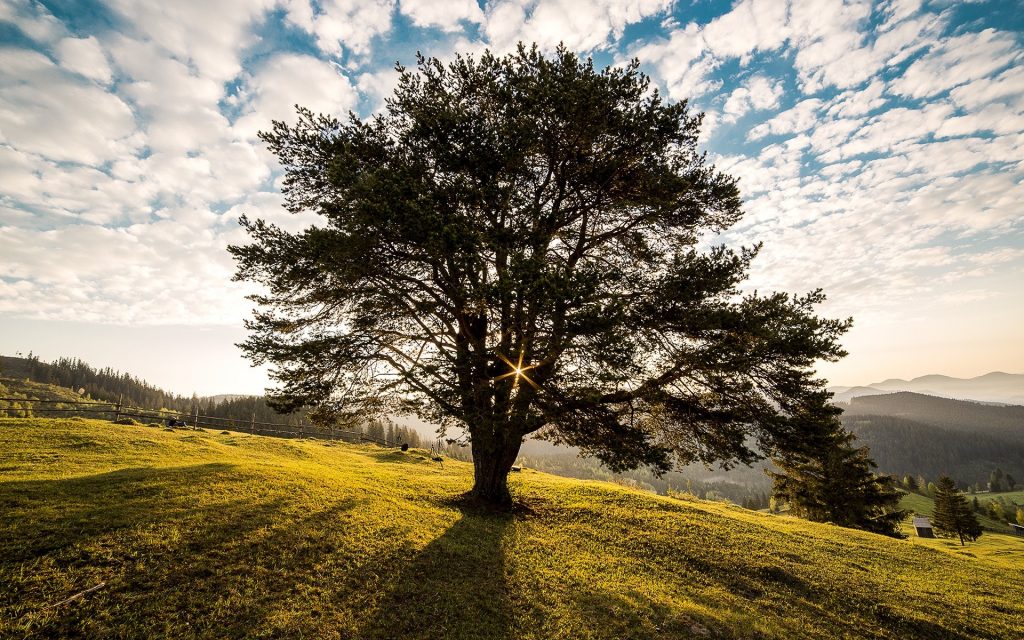
Anthracnose
The anthracnose infection reveals leaf necrosis of irregular shapes and burnt foliage that may also affect stems. This is a fungal pathology that may cause severe damage, yet it is difficult to tackle, especially in wet spring weather favorable for fungi development.
Leaf Rusts
Leaf rusts are among common tree diseases and are typically non-dangerous unless they cause early leaf sheds and, thus, negatively impact growth. Rusts are yellowish spots with powdery spores on the upper leaf part. Typically, rusts cover hosts in the second part of August and affect maple, birch, poplar, ash, plum, willow, and cottonwood.
Leaf Spots
These tree diseases are infections in the form of spots, most of the brownish color. They are caused by some fungi species (like Actinopelte, Septoria, Mycoshaerella, Phyllosticta) and parasitic algae. Cool wet springs are particularly favorable for the infection spread. Poplar hybrids are especially prone to leaf spot infestations.
Tar Spot
This tree leaves disease is usually caused by the Rhytisma fungi colonizing the maple family (maple proper and sycamore). The symptoms start as yellow-green or light green spots in late spring-early summer with added tar-like formations by the late summer. Even though they don’t kill the trees, they cause leaves sheds, which may affect the plant development. The infection is common in the northeastern part of the USA. If the fallen contaminated leaves are not removed in the fall, a new cycle will start next season.
Powdery Mildew
The signs of this tree leaf disease look exactly like white talcum powder. It should be distinguished from dust or bird droppings. It spreads in spots or patches and is mainly induced by the Microsphaera fungi. Unlike other fungi infections, it particularly persists in hot dry weather and colonizes succulent plants. The most common treatment is chemical control.
Leaf Blister
In this case, leaves are infected by the Taphrina genus that causes additional growth of the contaminated area (blisters, curling, expansion, puckering). The pathology starts with light green spots that acquire a white coating and eventually become brown. This tree disease is frequently found in the oak family, peaches, female catkins, and alder. It develops under cool wet weather conditions at the stage of leaf expansion. Leaf blisters do not result in defoliation and do not produce a serious impact on the suffering plant.
Tree Bark Disease
Stem pathologies are typically induced by fungi like leaf ones. However, these are more serious, depending on what part is affected. Tree branch diseases have less severe consequences for the plant since the infected branch can be removed. Little can be done with tree trunk diseases though when fungi reach the vascular system, the host dies.
Rusts
Rust is among the most common evergreen tree diseases, in Arkansas pines in particular. It is especially dangerous and can be lethal for young samples due to trunk galls. Mature plants can live with that as long as only branches are infected, and the disease does not destroy the central stem.
Black Knots
The black knot is a fungal pathology typical for the genus of Prunus, fruit and ornamental cherries, and plums in particular. This tree bark skin disease is caused by Apiosporina morbosa that may dwell on the host plant for several years. Black knots start as greenish-brown and brown formations (swellings) during the first year that grow into black hard galls during the second one. After two or three years, mature galls usually die and turn whitish or pinkish due to fungi colonization. Such galls can be numerous on a tree, and this is a danger.
The fungi spores spread to new branches in wet mild weather. The treatment includes chemical or mechanical control (fungicide spraying or pruning, correspondingly). The removed branches must be instantly destroyed because the spores continue to release up to four months. This tree branch disease becomes lethal when it reaches vital stem parts.
Cankers
Canker is a tree bark disease with necrotic areas. It occurs due to pathogenic fungi (e.g., Botryosphaeria, Hypoxylon, Phytophthora, Botryosphaeria, Cytospora) that penetrate through bark cracks or mechanical and natural injures (e.g., man-made wounds, frost cracks, fire burns, sunscalds). Healthy plants cope with the infestation, yet weakened ones cannot resist it.
The consequences may be different. In some cases, cankers only weaken the infected hosts. In others, multiple cankers kill them. Chemical treatment is not effective in this case. Pruning is the common method when infected branches have to be removed. However, the whole tree is cut if there are cankers on the stem.
Decays
This tree disease diagnosis is pretty simple – typically, it is identified through mushrooms (aka conks) covering the tree and discolored bark. The conks develop for many years before they can be noticed. They penetrate the plant through wounds and are located deep inside. For this reason, simple conk removal won’t solve the problem. Instead, the host can combat the conks itself thanks to compartmentalization. It is a natural process to release chemical compounds to get rid of the fungi as well as to plug the vascular tissue and generate callus. The success depends on the fungi’ ability to adjust to the change and the host’s health. Decays are not lethal, but they do weaken the plant and spoil the timber salability. In severe cases, such trees are omitted during timber harvesting operations, as they lose their economic value.
Wilts
Wilt is a lethal tree trunk disease that is diagnosed through burnt leaves with no defoliation. The plant dies due to fungi inside its vessels that hinder crown water saturation. Susceptible species include mimosa, oak, Dutch elm, and more.
Tree Root Disease
Tree root diseases affect the root and lower stem of both evergreen and hardwood species. Compared to leaf and bark infections, they have the highest tree mortality rates since they prevent water and nutrient absorption by the plant. Also, as it develops in the unseen tree part, it remains undetected until the damage becomes visible. Thus, it is more difficult to diagnose tree root diseases.
Pine Root Diseases
The most common root infections in conifers are annosum root rot, loblolly pine decline, and littleleaf disease.
Annosum Root Rot
This pathology is typical for Arkansas pines and widely spreads on sandy soils. It occurs due to the fungus Heterobasion annosum that generates sponge-resembling formations (hence the other disease name – root sponge). It gets into the host through fresh cuts and wounds and then attacks the roots.
About Murray, Utah
Murray is a city situated on the Wasatch Front in the core of Salt Lake Valley in the U.S. state of Utah. Named for territorial governor Eli Murray, it is the state's fourteenth largest city. According to the 2020 census, Murray had a population of 50,637. Murray shares borders with Taylorsville, Holladay, South Salt Lake and West Jordan, Utah. Once teeming with heavy industry, Murray's industrial sector now has little trace and has been replaced by major mercantile sectors. Known for its central location in Salt Lake County, Murray has been called the Hub of Salt Lake County. Unlike most of its neighboring communities, Murray operates its own police, fire, power, water, library, and parks and recreation departments and has its own school district. While maintaining many of its own services, Murray has one of the lowest city tax rates in the state.
Neighborhoods in Murray, Utah
Murray Oakes, Grant Park, Southwood Park, Murray Park, Murray Park Restrooms, Willow Pond Park, Neighborhood Veterinary Care
Things To Do in Murray, Utah
Bus Stops in Murray, Utah to Truco Services, Inc.
Bus Stop in Murray Central Station (Bay C) Murray, Utah to Truco Services, Inc.
Bus Stop in State St @ 4801 S Murray, Utah to Truco Services, Inc.
Bus Stop in Murray North Station Murray, Utah to Truco Services, Inc.
Bus Stop in State St @ 4949 S Murray, Utah to Truco Services, Inc.
Bus Stop in Murray Central Frontrunner/Trax Station Murray, Utah to Truco Services, Inc.
Bus Stop in Murray Blvd / Vine St (SB) Murray, Utah to Truco Services, Inc.
Bus Stop in State St @ 3925 S Murray, Utah to Truco Services, Inc.
Bus Stop in State St @ 4824 S Murray, Utah to Truco Services, Inc.
Bus Stop in State St @ 5223 S Murray, Utah to Truco Services, Inc.
Bus Stop in Murray Blvd / Allendale Dr (NB) Murray, Utah to Truco Services, Inc.
Bus Stop in Murray Blvd @ 5039 S Murray, Utah to Truco Services, Inc.
Bus Stop in State St @ 4721 S Murray, Utah to Truco Services, Inc.
Driving Directions in Murray, Utah to Truco Services, Inc.
Driving Directions from Woodruff Tree Trimming and Removal to 4640 Commerce Dr, Murray, UT 84107, USA
Driving Directions from Reliable Tree Care to 4640 Commerce Dr, Murray, UT 84107, USA
Driving Directions from Tree Pro-Tech to 4640 Commerce Dr, Murray, UT 84107, USA
Driving Directions from Prestige Tree And Landscape to 4640 Commerce Dr, Murray, UT 84107, USA
Driving Directions from Excellence Tree & Landscape to 4640 Commerce Dr, Murray, UT 84107, USA
Driving Directions from Amen Trees to 4640 Commerce Dr, Murray, UT 84107, USA
Driving Directions from Tim's Tree Care to 4640 Commerce Dr, Murray, UT 84107, USA
Driving Directions from Jordan Tree Service - Murray to 4640 Commerce Dr, Murray, UT 84107, USA
Driving Directions from Arbor Works to 4640 Commerce Dr, Murray, UT 84107, USA
Driving Directions from Diamond Tree Experts to 4640 Commerce Dr, Murray, UT 84107, USA
Driving Directions from Green Tree Arborist to 4640 Commerce Dr, Murray, UT 84107, USA
Driving Directions from TruCo Services to 4640 Commerce Dr, Murray, UT 84107, USA
Reviews for Truco Services, Inc. Murray, Utah
Emily Abercrombie
We had a great experience with TruCo! They were well priced, responsive and prompt. Michael was a pleasure to work with and gave us advice on which plants to put in where we took out our ugly old shrubs. I would highly recommend this company!!!
Michelle Turpin
TruCo Services gets 5 stars from us for customer service. We experienced a few issues with their services this last year and Rob Eccles in senior management, stepped in and immediately handled our issues. He was very committed to making sure they understood our expectations and would execute to make us happy.
Siobhan Billingsley
I work for a property management company and have the pleasure of working with Rob at a community in Sandy. He has been incredible to work with and always responds in a timely manner. He knows all the homeowners by name and address and is aware of all the "problem" areas when it comes to sprinklers. I never have to worry about following up with him because he always reaches out to provide me with an update. If you're looking to work with someone who takes pride in their job, is professional, and can solve the worst landscaping problems thrown your way, Rob is your guy. Thank you, Rob for all you do!
Jaime S.
We have used Truco at 2 of the complexes we manage, they have been great to work with. Good quality service, outstanding customer service with good communication. That's hard to find these days. I highly recommend them. Travis has been awesome to work with.
Jerusha Smart
We use TruCo for a majority of our properties and our home. While other landscaping companies we use come and go for various reasons like cost, communication issues, work performance, etc., TruCo is always consistent in price and work. Also, Rob is the best.
